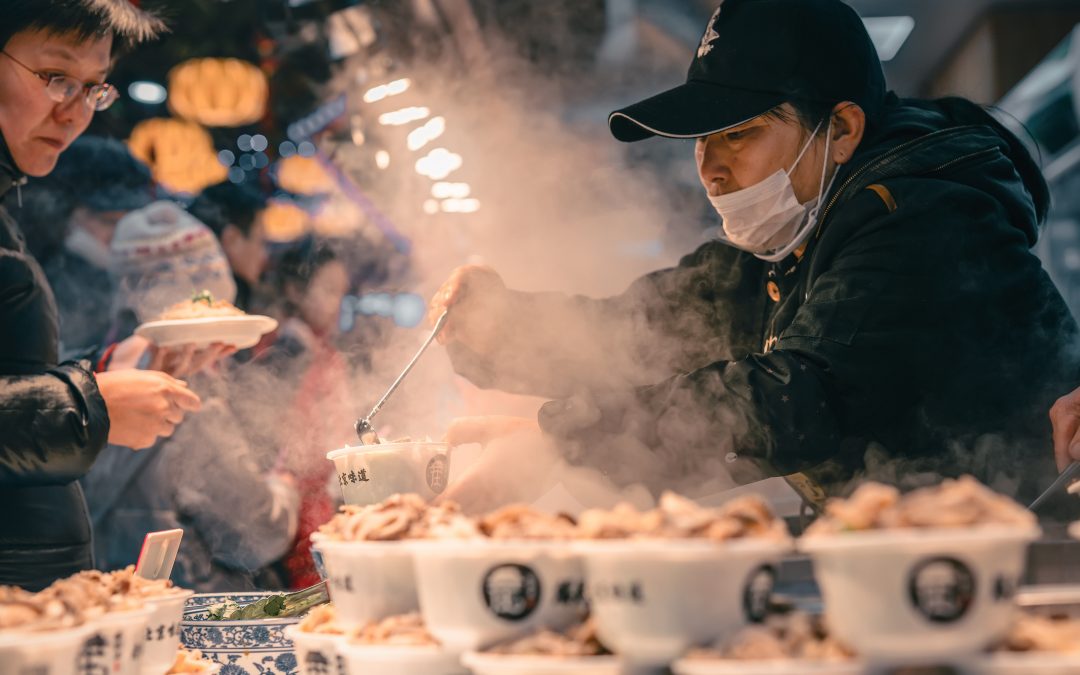Food identity is complicated and hard to define, I guess it’s the way we connect with food and food’s relation to our lifestyle, preferences, and culture. Your food identity is influenced by where you eat, have eaten and who was cooking. It’s also relative to where you have lived down to the very city or town and how extensively you’ve travelled or lived abroad. Unless you’re a native your expectations of authenticity are incomparable and people can identify with similar foods in completely different ways. Food identity is cultural but also very personal, it’s affected by dietary choices, religion, habits and your lifestyle in general.

SIMPLE PLEASURES
Food identity in the modern age is like making a toasted cheese sandwich, the more you learn the more complicated it becomes. It simply begins as melted cheese (any cheese) between bread that’s handed to you as a child, dangerously warm and deliciously satisfying. As you grow the way you identify with food grows as well, you become more particular on what type ingredients and how its prepared. Later again it’s a certain cheese with your favorite bread from a particular bakery in the right quantities. Then behold just cheese is not enough you need a pickle to balance the fat, maybe dash of sriracha or Dijon mustard for added umami, American cheese (40% for melt) and Gruyere (60% for flavor), the bread should be crusty sourdough thats grilled in a cast iron skillet with lots of French butter until crispy on the outside with a melting gooey center.
My rambling thoughts below are mainly focused on European cuisines (western, southern and central Europe) and Asia (south east, east and northern Asia), it’s is a broad topic and i don’t want to generalize any more than I already am. I wont even bother referencing any Middle Eastern, Indian, African or South American cuisines as my experience there is very limited. I want to discuss the very, very brief history of food and the way tradition and knowledge was shared to create the authenticity we associate with food today. Also it makes me wonder was original authenticity based off overwhelming popularity? The ingredients? Or was it more about who created it and when?

A lot of new world countries with a shorter culinary history (or less culture) are more accepting of progressive cooking and modern technique. Its especially visible with western styles but also Asian varieties that are nearly always labeled as “modern”. Modern meaning: made using the most recent ideas, methods and technology. If you think about the definition in relation to modern life it’s the natural progression or evolution of ideas through modern techniques.
But why our need to attach the word “modern” when referring to food and other arts? Almost like a warning sign, eat at your own risk. With electronics, education, science, cosmetics, cars, fashion, infrastructure “modern” is the expectation, not a label. We the consumer always expect constant improvement and innovation. We crave the latest version or update that’s been fine-tuned and developed over time, modernizing for many things is constant, natural change.
Maybe it comes down to the fact that food is just so bloody personal? Nearly everyone preforms some method of cookery everyday, meaning we all have opinions on what we eat. Possibly it’s our memories and traditions making us hesitant to question a need for change? But were the original attempts of anything ever the best version of themselves? There will always be a craving for authenticity while our short memories don’t remind us todays classics all began as something else.

If you look back through the history of European cooking there is “cuisine classique” that’s credited to a French chef Augustine Escofier. Marie-Antoine Carême was the originator and first real celebrity chef, but Escoffier developed her work and make it more accessible. He implemented the brigade system thats now used by nearly all kitchens world wide, he simplified and modernized Grande or Haute Cuisine to make it more accessible (cuisine classique), he was the pioneer of a la carte cooking and serving dishes individually rather then all at the same time, as well as writing numerous instructional cook books and guides that are still used today.
Few can deny in terms of European cooking the French were undisputed pioneers. They invented the restaurant and to an extent the “restaurant scene”. They developed the familiar restaurant grammar and dinning etiquette we all understand today. Even as traditional French cuisine is dying other nations have raised the flag by using French techniques and applying their own flavors and ingredients. Because of the Frenchies own pride or perhaps their reluctance to change others had a chance to shine, taking French “styled” cooking into the future. Everyone is cooking like a French man, the Scandinavians, the Americans, the South Americans, the Australians, the Japanese, the British, the Chinese you name it. It may not look or taste like French ingredients but the techniques, methods, equipment and the terminology at its core it’s all French, possibly even a better version than the original.

China one of the world’s oldest civilizations has been the greatest single influence on Asia’s food scene. In many ways china was the mother of Asian Cuisine in the East, South East and Northern Asia, its influence in the region is unmatched. China gave Asia the wok, chopsticks, soy sauce, noodles, rice wine, tofu and all other forms of early fermentation like what the Japanese call Miso today. Also not surprisingly they were the first to cultivate rice, all of the above was later developed and refined by its neighbors to suit their own personal taste. Crazy right, the Chinese gave rice and soy to the Japanese, some would even argue that sushi itself was inspired by early forms of Chinese cuisine and later developed and perfected by the Japanese.
Chinese cooking methods and techniques where adopted by nearly all its neighboring countries, while less so in India and its middle eastern counterparts. The influence is not only because of china’s sheer size and shared borders but its citizen’s extensive migration throughout all of Asia. It’s especially obvious in the south east and northern Asian countries where many methods and ingredients are based off Chinese cookery.



There will always be tension when pushing boundaries between tradition and innovation, while creativity or change is often shackled by specifications or rules. With this in mind I wonder if it’s possible to be modern and authentic at the same time or there’re simply unassuming opposites?
It seems the mystery of food is and was found closer to its origins, in times when recipes were secret and never public knowledge. Accessibility reduced the chances of “new authenticity”, time and place really was everything. While all this brings into question how we identify with food today in our fast paced multicultural world. Creativity today is immediately labeled as modern or fusion, but when has the line been crossed into creating something new? When we examine a very short history of food it was never singular or set in black and white, it always evolved.
What I understand so far:
- Every country throughout history borrowed from one another, adopting techniques and ingredients to later make their own.
- No country exclusively uses their own native, authentic ingredients.
- Many favorite ingredients associated with a nations cuisine are foreign, but now form the basis for what’s authentic.
- At some point in history dishes were defined as classic representation of a countries cuisine – the exact time or reasoning for this is not clear.
- Becoming authentic or classic seems to be based around universal popularity and availability. Or how certain foods relate to a nations traditions and beliefs.
- There was an unofficial expiration date on “new authenticity” and modern classics are harder to find (or agree upon)
- Mystery and exclusivity added to classic or authentic status, historically there were also fewer opinions to appease. Accessibility has removed a lot of mystery surrounding food.
- In the modern age lines are blurred by shared knowledge making it harder to differentiate particular cooking styles and cuisines.
- New labels are applied to creative cooking like modern, progressive, fusion, contemporary, inspired…and so on.
- Every one identifies with the same foods or cuisines in completely different ways

I did the majority of my apprenticeship in a French Bistro learning classic techniques and traditional recipes. I remember at cooking school i was jealous of other young chefs working in cool, more modern Asian or Australian restaurants. While they were looking up to me because I had a foundation and technique from classic training. They cooked with freedom and reckless creativity while I was methodical and practical in my preparations, both are beautiful in their own way.
As far as how I identify with food it changed so much over the years. In my case it was cooking, travel and experience that changed my relationship with food. One thing I learned about food while traveling is that immense pride is always attached to traditional meals, no matter where you go. Its so deeply personal and often connected to long, complicated histories that people cherish and don’t want to forget. Protecting these traditions and authenticity has become a way to remember and celebrate the past. While on the other hand younger generations in far off lands grow up eating certain foods with no idea of historical or cultural relevance. They also love and identify with these foods in their own way, the same nostalgic feeling of joy with different memories and feelings attached.

We talked about modern being the expectation of todays consumers and why food is often excluded unless labeled otherwise. I believe its not about the ingredients, the food or the dish itself but what it represents and the story being told. In an age when everything is available its not about always looking for the newest but rather reinventing the past. Take a moment to think on food experiences that you identify with personally, or the foods that had significance for you and your family. It’s often simpler moments in life that are most memorable and food is nearly always involved.







Well written Ryan, it keeps you engaged with interesting facts on the history of food and how we are influenced by the different cultures and how they evolved . Thanks a good read. It reminds how central and significant food is in our life .